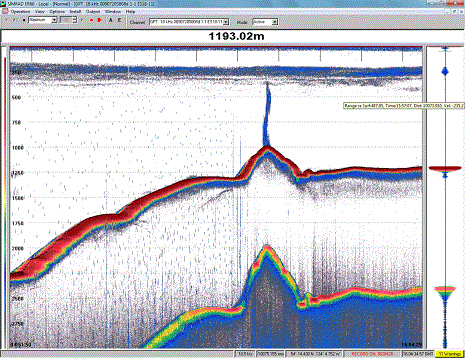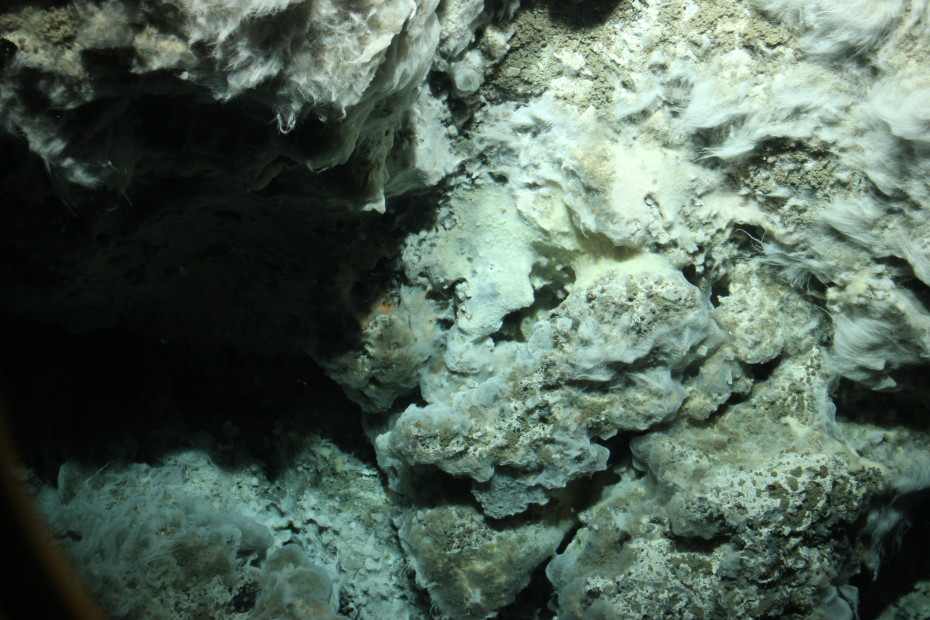
About two years ago, geologists studying an ocean channel near Ketchikan spotted something unusual. It was a submerged volcano, about 150 feet below the surface.
It was dormant. The experts estimated it hadn't erupted for about 10,000 years.
Now, scientists have discovered another underwater volcano, near Dixon Entrance, just north of Alaska's maritime border with British Columbia.
"Nothing like that had been mapped in the area before, so we knew then that we had discovered something new," said Gary Greene, a marine geologist working with the Sitka Sound Science Center.
He and a Canadian counterpart found the volcano Sept. 23 during a study of the Queen Charlotte-Fairweather Fault System. That's been the epicenter of some recent earthquakes.
"We had just completed some survey work and we modified our line to go to another place to look. And as we were transiting, we came across this big plume and this big cone where the plume was coming out of," he said.

But Greene said there was no fresh lava — or anything else to worry about.
"We worked over the vent, right over the vent. And we're still around to tell about it. So I think it's probably OK for mariners," he said.
He said the discovery sheds light on the workings of the Queen Charlotte-Fairweather Fault System, which is offshore British Columbia and Southeast Alaska.
It's where a huge, moving chunk of the Earth's crust, called the Pacific Plate, rubs up against the North American Plate.
"It means that this fault acts as a conduit to deeper in the Earth to places where either magma or fluids that are heated by magma or geothermally heated at depth can migrate up through the fault to the surface," he said.
Tory O'Connell, research director for the Sitka Sound Science Center, said the research is providing "really important new information about earthquake hazards in our area."
"It's also helping direct future research that will help define the significance of understanding the fluidity of that fault," she said.
Lava and other volcanic fluids lubricate faults, lessening the chance of sudden movement. But that can increase pressure on other areas along the fault, forcing them to jerk forward, causing earthquakes.
Greene said the new volcano was found as scientists investigated another underwater hazard.
"This is an area that had had indications that there were failures occurring on the slope here. And large failures, that is, large landslides that may general tsunamis," he said.
The new volcano is not alone. Greene said the study found others nearby, but none were active.
Several other venting volcanos have been found along the fault in recent years off the shores of British Columbia.
The Queen Charlotte-Fairweather Fault study took place Sept. 15-23 on board a Canadian Coast Guard ship, the John P. Tully. It included Greene, Vaughn Barrie of the Geological Survey of Canada and other scientists and technicians from the Geological Survey of Canada and the U.S. Geological Survey. Funding for Greene's work came from the U.S. Geological Survey, through the Sitka Sound Science Center.



Comment: Other underwater volcanoes have been discovered in recent times off the coast of Australia, New Zealand and Antarctica. In April this year, scientists were stunned by the apparent eruption of a submarine volcano, 'Axial Seamount' off the Northwest US coast (at a similar time to the devastating Nepalese earthquake and the massive eruption of the Calbuco volcano in Chile), which could explain the "unprecedented warming occurring over the last 13 years" of water in this area.
As the number of volcanoes erupting right now is greater than the 20th century's YEARLY average, a comparable escalation in activity of their underwater counterparts seems logical.
It is estimated there are up to one million submarine volcanoes on our planet. Effects from this volcanic activity, combined with increased methane outgassing, radiation from the Fukushima disaster are probably also causing the ongoing devastation of marine life, mass fish die offs and strange migratory behaviour we are currently witnessing.